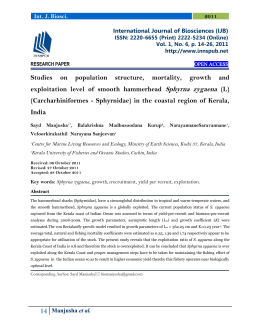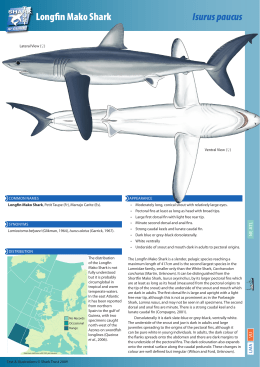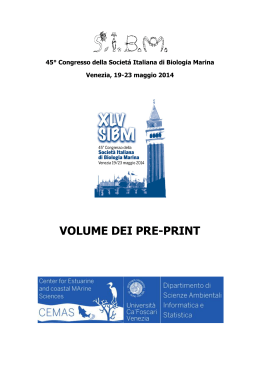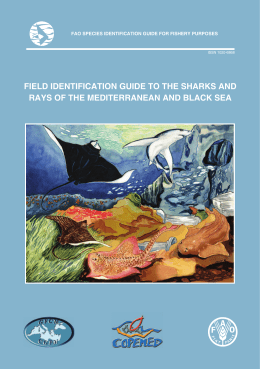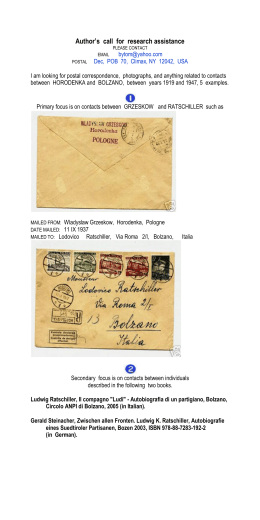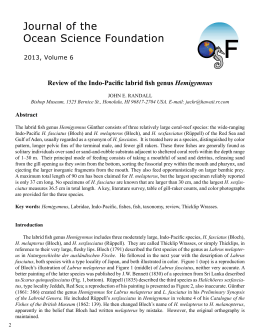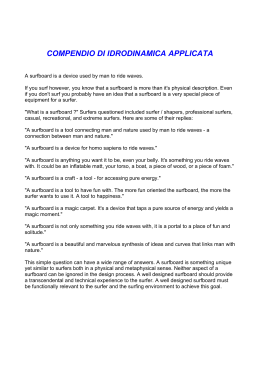Smooth Hammerhead Shark Sphyrna zygaena Lateral View (♀) Ventral View (♀) SYNONYMS Sphyrna lewini (Griffith & Smith, 1834), Squalis pictus (Blainville, 1816), Squalus carolinensis (Blainville, 1816), Sphyrna zigaena (Linnaeus, 1758), Spyrna zygaena (Linnaeus, 1758), Squalus malleus (Valenciennes, 1822), Squalus zygaena (Linnaeus, 1758), Zygaena malleus (Valenciennes, 1822), Zygaena subarcuata (Storer, 1848), Zygaena vulgaris (Cloquet, 1830). DISTRIBUTION The Smooth Hammerhead Shark has a widespread but patchy distribution in temperate and tropical waters worldwide. In the east Atlantic it is known from the southern British Isles to Senegal and the Ivory Coast, No Records including the Occasional Mediterranean Sea. Range It is also known in the west Atlantic, the Indian Ocean and the Pacific (Compagno, 1984). Map base conforms with ICES grid squares. Text & Illustrations © Shark Trust 2009 • Broad, narrow-bladed cephalofoil with no median indention. • Moderately sized first dorsal fin. • Second dorsal fin tiny and set above the anal fin. • Small pelvic fins with almost straight posterior edges. • Large, well developed caudal dorsal lobe with terminal notch. • Dark olive to grey brown dorsally. • White ventrally. • Maximum total length reported to 500cm. The Smooth Hammerhead Shark is an easily recognised large species. In European waters it could be confused with the Scalloped Hammerhead Shark, Sphyrna lewini, or the Great Hammerhead Shark, Sphyrna mokarran, although both of these species has an indent in the very centre of the leading edge of the cephalofoil, a feature the Smooth Hammerhead Shark lacks. The first dorsal fin is moderately sized with large free rear tips. It originates just behind the pectoral fins with the free rear tip ahead of the pelvic fins. The pelvic fins are small and square. The second dorsal fin is tiny, comparable in size to the anal fin over which it is positioned. The dorsal lobe of the caudal fin is large and well developed with a strong terminal notch (Compagno, 1984). Dorsal colouration is from dark olive to dark grey with no patterning, although some individuals have dusky or black edged fins. It is white ventrally. There are reports of the Smooth Hammerhead Shark reaching 500cm in length, although 250-350cm individuals are more common (Bester, Unknown). NT Smooth Hammerhead Shark, Common Hammerhead Shark, Round Headed Hammerhead Shark, Requin-Marteau Commun (Fr), Cornuda Cruz (Es). NE ATL MED APPEARANCE SPZ COMMON NAMES Supported by: SIMILAR SPECIES Sphyrna lewini, Scalloped Hammerhead Shark Sphyrna mokarran, Great Hammerhead Shark (Not to scale) Text & Illustrations © Shark Trust 2009 Smooth Hammerhead Shark Smooth Hammerhead Shark Sphyrna zygaena TEETH The teeth have very broad cusps with smooth or weakly serrated edges (Compagno, 1984). ECOLOGY AND BIOLOGY HABITAT The Smooth Hammerhead Shark is found close inshore and over the continental shelf to depths of at least 200m, although it prefers to stay shallower than 20m. While it is more tolerant of temperate waters than any other hammerhead shark, it does make migrations towards warmer waters in the winter. This is reversed in the summer and it migrates towards the poles into cooler water. During these migrations adults may form small groups, and young sharks less than 1.5m in length are known to form enormous schools. It is usually a solitary animal however. It has been known to enter freshwater on occasion (Bester, Unknown). DIET A 1999 study showed that cephalopods constitute (68.9%) of the diet of the Smooth Hammerhead Shark, followed by teleost fish (29.8%) with small amounts of other chondrichthyans and benthic invertebrates (mostly crustaceans) (Cortés, 1999). However, other studies have shown them to be primarily piscivores with a preference for other elasmobranchs, especially in inshore areas (Bester, Unknown). Compagno (1984) lists the main prey items as herring, menhaden, sea catfishes, sea bass, mackerel, porgies and also small sharks, skates, stingrays, shrimp, crabs, barnacles, squid and other cephalopods (Compagno, 1984). Text & Illustrations © Shark Trust 2009 REPRODUCTION Like Carcharinidae and other Sphyrnidae species, the Smooth Hammerhead Shark reproduces through placental, or yolk-sac, viviparity. For about the first third of the gestation period, the embryos are nourished by a yolk supply in a very similar way to the 60% of elasmobranchs which reproduce through normal viviparity. However once this yolk supply is used up the yolk-sac changes, becoming more folded and wrinkled. It now interlocks with the lining of the mother’s uterus. The blood supply to both the yolk-sac and the uterus wall increases allowing nutrients and oxygen to pass from the mother to the embryo and vice versa for waste, very much like a mammalian placenta (Martin, 1994). Female Smooth Hammerhead Sharks reach sexual maturity at around 270cm in length, males at around 210–250cm. Mating and birth both occur during the summer with a gestation period of 10–11 months. Litters of 20–40 pups have been reported with each pup measuring around 50cm in length at birth. It gives birth in inshore nursery areas such as lagoons and estuaries where the young form large schools (Bester, Unknown). Supported by: COMMERCIAL IMPORTANCE A common and fairly abundant species, the Smooth Hammerhead Shark is taken with pelagic longlines, handlines and pelagic and bottom trawls. Its meat is not considered to be high quality but it is used fresh, dried salted and smoked for human consumption. Its hide is used for leather, its liver oil for vitamins and its fins are highly prized for sharkfin soup. Its carcass can also be processed for fishmeal (Compagno, 1984). THREATS, CONSERVATION, LEGISLATION While the Smooth Hammerhead Shark is an abundant and widespread species, population trends are poorly understood and fishing mortality is likely to be significant. While there are few targeted fisheries, it is taken as bycatch across its range by longline, handline and trawl fisheries. Due to the high value of its fins, animals taken as bycatch are unlikely to be returned alive (Casper et al., 2005). Text & Illustrations © Shark Trust 2009 Smooth Hammerhead Shark IUCN RED LIST ASSESSMENT Vulnerable (2005). HANDLING AND THORN ARRANGEMENT • Handle with care. • Large, powerful shark. • Sharp teeth and abrasive skin. Smooth Hammerhead Shark Sphyrna zygaena REFERENCES BESTER, C. Unknown. Smooth Hammerhead. Florida Museum of Natural History. www.flmnh.ufl.edu/fish/. COMPAGNO, L. J. V. 1984. Sharks of the World: An Annotated and Illustrated Catalogue of Shark Species Known to Date. Volume 4, Part 1. Hexanchiformes to Lamniformes. FAO. Rome, Italy. CORTÉS, E. 1999. Standardized Diet Compositions and Trophic Levels of Sharks. ICES Journal of Marine Science. 56 (5): 707-717. FERRETTI, F., MYERS, R. A., SERENA, F., LOTZE, H. K. 2008. Loss of Large Predatory Sharks from the Mediterranean Sea. Conservation Biology. 22 (4): 952-964. MARTIN, R. A. 1994. From Here to Maternity. Diver Magazine, April 1994. CASPER, B. M., DOMINGO, A., GAIBOR, N., HEUPEL, M. R., KOTAS, E., LAMÓNACA, A. F., PÉREZ-JIMENEZ, J. C., SIMPFENDORFER, C., SMITH, W. D., STEVENS, J. D., SOLDO, A., VOOREN, C. M. 2005. Sphyrna zygaena. In: IUCN 2009. IUCN Red List of Threatened Species. www.iucnredlist.org. Text: Richard Hurst. Illustrations: Marc Dando. Citation Shark Trust; 2010. An Illustrated Compendium of Sharks, Skates, Rays and Chimaera. Chapter 1: The British Isles and Northeast Atlantic. Part 2: Sharks. Any ammendments or corrections, please contact: The Shark Trust 4 Creykes Court, The Millfields Plymouth, Devon PL1 3JB Tel: 01752 672008/672020 Email: [email protected] For more ID materials visit www.sharktrust.org/ID. Registered Company No. 3396164. Registered Charity No. 1064185 Text & Illustrations © Shark Trust 2009
Scarica
